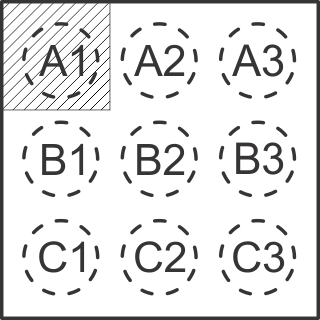SLVSDE4E march 2017 – june 2023 TPS61253A , TPS61253E
PRODUCTION DATA
- 1
- 1 Features
- 2 Applications
- 3 Description
- 4 Revision History
- 5 Device Comparison
- 6 Pin Configuration and Functions
- 7 Specifications
- 8 Detailed Description
- 9 Application and Implementation
- Power Supply Recommendations
- 10Layout
- 11Device and Documentation Support
- Mechanical, Packaging, and Orderable Information
Package Options
Mechanical Data (Package|Pins)
- YFF|9
Thermal pad, mechanical data (Package|Pins)
Orderable Information
6 Pin Configuration and Functions
 Figure 6-1 9-Pin DSBGA YFF Package (Top
View)
Figure 6-1 9-Pin DSBGA YFF Package (Top
View)Table 6-1 Pin Functions
| PIN | I/O | DESCRIPTION | |
|---|---|---|---|
| NAME | NO. | ||
| EN | B3 | I | This is the enable pin of the device. Connecting this pin to ground forces the device into shutdown mode. Pulling this pin high enables the device. There is an internal resistor pulled to GND. |
| GND | C1, C2 | – | Ground pin |
| MODE | C3 | – | Operation mode selection pin Mode = Low, the device works in the Auto PFM mode with good light load efficiency. Mode = High, the device is in the forced PWM mode, keep the switching frequency be constant crossing the whole load range. Mode = Floating, the device works in the ultrasonic mode; it keeps the switching frequency larger than 25 kHz to avoid the acoustic frequency toward no load condition. |
| SW | B1, B2 | I/O | The switch pin of the converter. It is connected to the drain of the internal low-side power FET and the source of the internal high-side power FET. |
| VIN | A3 | I | Power supply input |
| VOUT | A1, A2 | O | Boost converter output |